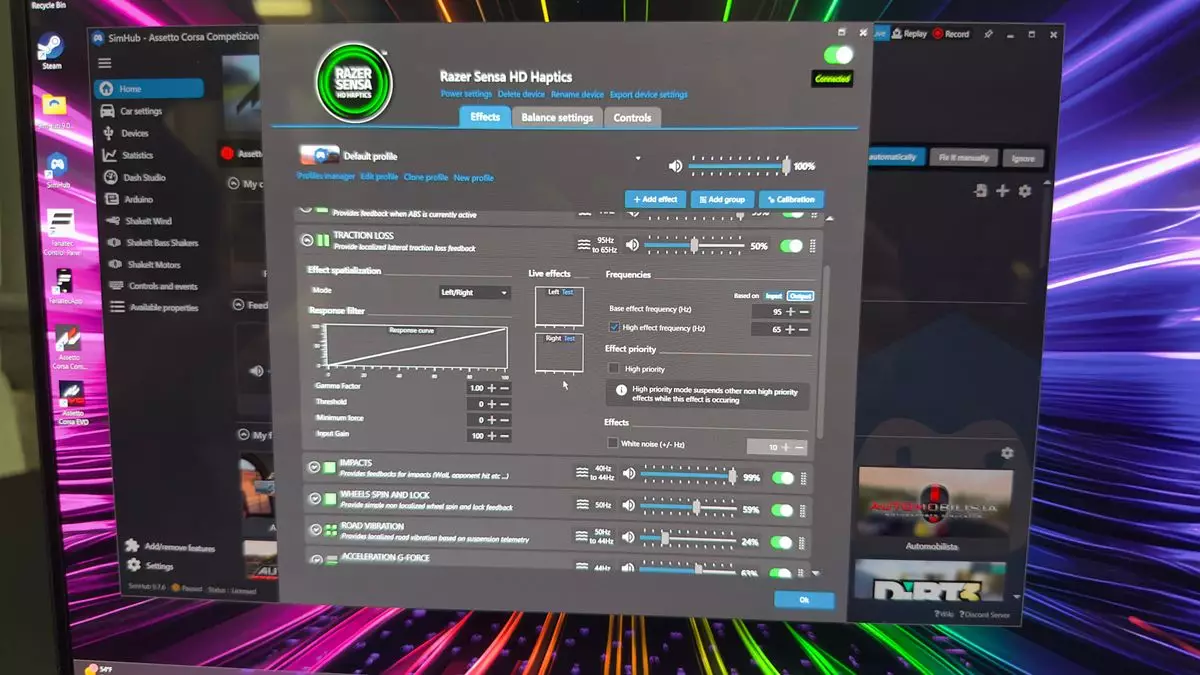In the ever-evolving gaming landscape, few innovations have captured the imagination of players quite like haptic feedback technology. Last year, Razer—known for its cutting-edge gaming peripherals—unveiled two groundbreaking products that promised to elevate immersive experiences into uncharted territory: the Freyja seat pad and the Kraken V4 Pro headset. While both devices have garnered attention, the Kraken V4 Pro, with its premium pricing, raises questions about accessibility. Meanwhile, the Freyja seat pad presents an intriguing case for its role, particularly in delivering a tactile sense of connection to the digital worlds we explore.
Having tested these devices together during GDC 2025, my understanding of their potential applications has shifted significantly. Initially, I had doubts about how vibrations transmitted through a seat pad could enhance gameplay. However, my experience with sim racing while using both the Freyja and the Kraken V4 Pro headset solidified my belief that these products are game-changers—specifically for racing enthusiasts.
Revving Up the Experience: Sim Racing and Haptics
Seated on the Freyja and donning the Kraken headset, I fired up Assetto Corsa Competizione, confident but skeptical. The ambient roar of a Lamborghini engine filled my ears as I navigated through twists and turns, relying heavily on auditory cues to fine-tune my driving. For the first few laps, the haptic feedback felt more of a distraction than an enhancement. However, as time went on, a fascinating synergy developed between the auditory signals and the pulsating feedback radiating from the Freyja under my legs and back.
Suddenly, I was acutely aware of braking points and the nuances of traction as they unfolded through my body. The haptic feedback provided a unique layer of communication; it rendered auditory cues secondary and allowed me, instead, to physically feel my vehicle’s grip—or lack thereof—on the track. It’s a revelation that influences race times, based not solely on what one hears, but what one experiences through touch. Exploring this new facet of haptics suggests that the future of simulation gaming could entail a tactile dialogue between driver and machine.
Beyond Vibrotactile Feedback: The Need for Full Immersion
Despite the awe-inspiring experience provided by Razer’s current offerings, they fall short of delivering a comprehensive racing experience. The Freyja, while excellent, lacks side support that mimics the feeling of cornering forces—an essential element for truly immersive racing. This limitation brings to mind the tantalizing potential of a fully integrated racing seat featuring the Freyja technology. Imagine combining the forces of haptic feedback with the encasing comfort of a bucket racing seat; the result could be staggering.
However, the critical question arises: will Razer venture into such innovative territory? While representatives remained vague during my inquiry about future products, a smile suggested that it’s a possibility still tantalizingly on the table. The reality of developing a fully integrated racing seat serve to highlight the challenges posed by the niche nature of the sim racing market. With the investment required to produce a high-quality Freyja racing rig, the financial return may prove less enticing compared to broader gaming peripherals.
Market Viability vs. Technological Innovation
Sim racing operates in a specialized sphere of the gaming industry, one marked by passionate enthusiasts but limited mass appeal. As Razer ventures into a space characterized by high-intensity demand yet potentially low sales volume, strategizing the pricing of new products becomes vital. While creating a full-featured racing seat with Freyja technology integrated seems promising, there’s also the risk of pricing potential customers out of the market altogether. High-volume sales typically justify lower prices, but niche products might necessitate premium taglines due to anticipated low sales.
Despite this potential drawback, a middle-ground solution exists—a Freyja racing chair that sits between static setups and fully motion-capable rigs could attract a wider audience while remaining accessible in terms of pricing. Moreover, there’s an undeniable allure to experiencing the immersive qualities of driving simulations in something that crosses the threshold from gaming accessory to holistic gaming experience.
The Future of Haptic Gaming: A Unified Development
In tandem with its hardware advancements, Razer announced at GDC a comprehensive move to streamline its software ecosystem by integrating multiple SDKs into one cohesive platform, dubbed Wyvrn. The importance of this integration cannot be overstated, as it hints at substantial advancements for future racing games developed within the Unreal Engine 5.5 framework. This is a significant step toward preparing developers to optimize the haptic feedback experience across multiple devices.
Ultimately, while the Freyja and Kraken V4 Pro deliver sublime elements of connectivity between player and game, one lingering thought remained with me post-experience; the yearning for their presence in my own gaming setup. As I sit in an office devoid of such haptic realities, I can’t help but imagine the thrilling possibilities a complete integration would bring to my racing simulations. The future beckons, and if Razer can effectively leverage its innovations, the gaming landscape could change profoundly—immersively and vibrantly.

